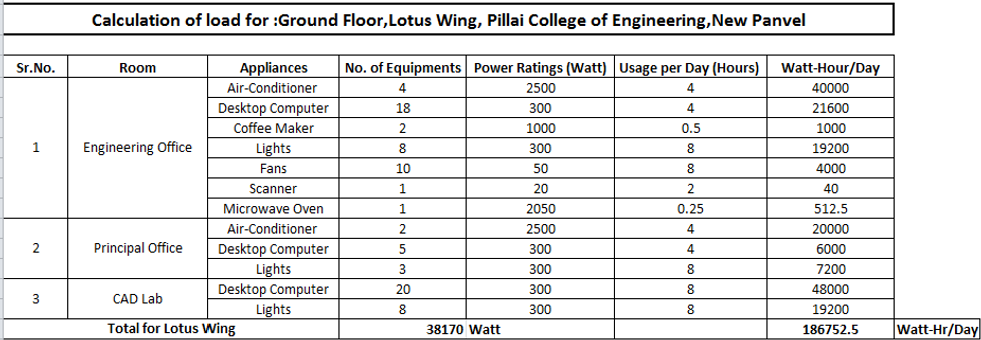Designing a Parking Top Solar Plant for Pillai's Institute of Information Technology
India, a rapidly growing economy with more than 1 billion people, is facing a huge energy demand. The country stands fifth in the world in the production and consumption of electricity. The electricity production has expanded over the years but we cannot deny the fact that the population of the country is also expanding. The power produced in the country is mostly from coal (53%) and it is predicted that country’s coal reserves won’t last beyond 2040-50. More than 72% population living in villages and half of the villages remain without electricity. It’s high time that our country should concentrate more on energy efficiency, conservation and renewable energy. To meet this surging demand, solar energy is the best form of energy to fulfill the energy needs of India and bridge the energy demand-supply gap.
The objective of the project is to design a Roof-Top Solar plant which can produce enough power to cater the load requirements of Engineering Office,Principal Office and a CAD Lab present on the first floor of LOTUS Wing of the PIIT's Campus. I have selected the load of the mentioned rooms which are in the LOTUS Wing because the wing is closer to the proposed parking site. All the rooms mentioned are on the ground floor of the building and thus for further expansion of the solar plant, parking site can be expanded to meet the bigger area required to accommodate the extra solar panels.
The load calculation is done by researching on the internet thus can be concluded as 95% true,other variables such as the efficiency of charge controller has not been taken into consideration.
There are few factors need to be considered before designing a Solar System
Location of the Site

The location of the proposed parking site is at the back of the University Campus where most cars and bikes are being parked highlighted in the red area as shown above.
Site & Meteo Details

The Design of Solar System
The design is based on per day basis of electricity consumption, we will calculate the load and select the
P-V Panels suitable to Generate and Suffice the calculated load.
There are 4 Steps to design a Solar System :
1) Calculate the required load on per day basis.
2) Calculate the Inverter Requirements.
3) Calculate the battery requirements.
4)Select the P-V Modules.
1) Calculate the required load on per day basis :
We are designing the solar P-V System for Ground floor of Lotus Wing in the Institute campus. This floor has Principal office, Engineering office and a Mechanical CAD Lab. To calculate the load we will check the Power rating of each appliance , No. of appliances and usage per day Multiplying that we will get an approximate value of electricity consumption of ground floor.

2) Calculate the Inverter Requirements :
An inverter is a device which converts DC Current to AC Current. Charge for the electrical load will be provided by inverter to all the appliances.

2) Calculate the Battery Requirements :
For Calculation of battery sizes we must take the efficiency of inverter into consideration. Generalized efficiency of Inverter is around 95% so the power required must be Calculated with a buffer of 5%
Now,
186752.5 = 219708.8 Watt-Hr/day
0.95
This energy will be stored in batteries which will be supplied to inverter.
Let us use the battery of 120 V. If we divide the battery rating with the energy required we will get the amp-hr/Day required
so, 219708.8 (Volt*Amp-Hr/Day) = 1830.9 Amp-Hr
120 (Volt) Day
This is the Charge that needs to be supplied to inverter per day,
But the problem with batteries is they are not 100% efficient, it means that the Charge stored in battery can not be fully optimized this phenomenon is called as Depth Of Discharge (DOD)
Lead acid batteries have DOD upto 50%
Li-Ion batteries have DOD upto 80%
The most commonly used are lead acid batteries as they are cheap and easy to replace.
So the DOD must be taken into consideration before selection of batteries. we will have to divide the daily charge required by the DOD to arrive at a value
1830.9 = 3661.8 Amp-Hr
50% Day
There is another Phenomenon which must be taken into consideration
